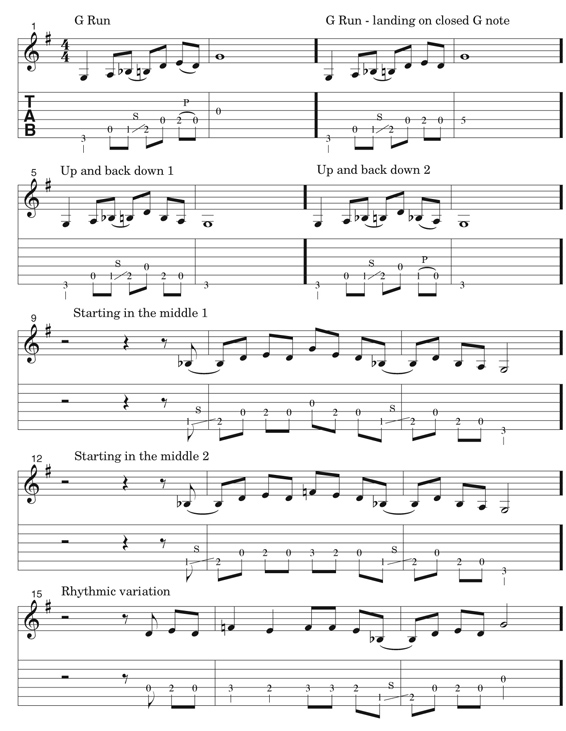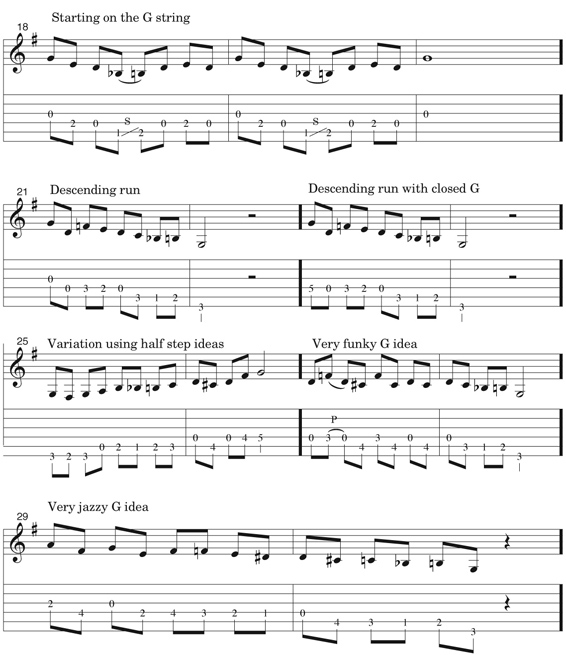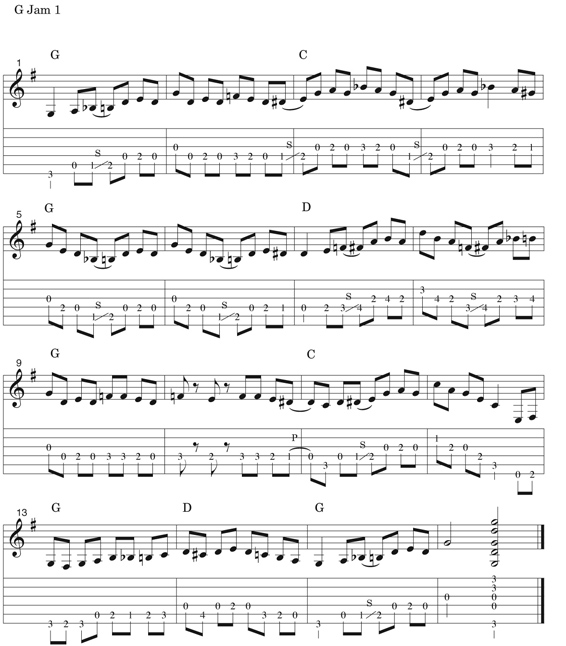|
I am very excited to be the flatpicking
instructor for FGM’s online newsletter. It is my goal as your online
flatpicking teacher to, over time, give you all the information you’ll
need to become a more advanced and accomplished flatpicker. Everyone
learns differently and not everyone is at the same level; hence, I need
to vary my lessons to appeal to everyone. Please email any
flatpicking topics you would like to see featured in the “lesson”
portion of these newsletters. Some may prefer awesome new tunes
(building repertoire), while others may need improvising ideas, picking
techniques (alternate picking and triplet runs), or anything else that
eager flatpicking students may have questions on.
This month’s lesson is about expanding the way
we look at the classic G run. By adding a couple slight variations
(changing the order and timing of the notes) and by adding a couple new
notes (flatted 7th’s and flatted 5th’s) we can have endless ways to
interpret a G run. You can use these ideas to fill the spaces between
vocals or expand them into an entire flatpicking solo for an
instrumental tune.
All of the variations in this lesson are in G
open position in the lower octave. Once you have learned all these G
run variations it is your job to move these ideas up an octave and to
transpose the ideas to fit over other chords! To show you how to use
these ideas in a music situation I have transposed the ideas to work
over C and D (the other two main chords in the key of G) and strung
them together to form what I call “G Jam 1” over a G instrumental tune
like Monroe’s “Road to Columbus.”
Each letter is one 4 beat measure:
G Jam 1
GGCC
GGDD
GGCC
GDGG
I use this typical chord progression to teach my
students how to play over changes (outline chords). When I learn new
licks and runs I try to apply them to this chord progression in all my
favorite keys. I would first need to learn each example in not only G,
C, and D but eventually in A, B, Bb, and C# -- well, you get the
idea...I could play these ideas in any key! Finally, I cut and paste
the ideas together to fit the desired chord progression of a bluegrass
song. Sometimes it takes some time and patience to fit these ideas
together in a way that makes sense. You’ll no doubt need a tape recorder
or a patient friend to back you up as you take the time needed to
transpose these G run variations all over the guitar.
I encourage you to
email me at [email protected] if you’d like help beginning to
transpose these ideas. Feel free to contact me with any other questions
about this lesson, general comments and questions, or with any concepts
you’d like to see me cover in the future in these free online lessons.




|